ART CLUB vol. 1: Art Collectors, Critics, and Historians at Home
When your livelihood revolves around talking about art, what types of artwork do you decide to live with?
❥This email may be truncated in your inbox. To make sure you are reading the entire post, please move yourself along to a web browser!
All words here are my own, unless otherwise stated. More from me + Absolument can be found in these places:
Website | Instagram | Book Recs Merci, thank you for reading!
As a spin-off of my BOOK CLUB series—where I shamelessly spend my time pulling book titles from well-known people’s shelves—I wanted to focus on artworks displayed in the homes of those who famously collect, criticize, or study the history of art for a living. My thoughts keep finding themselves swarming around artist Isabella Ducrot (my last Substack post was about her) and the types of art she surrounds herself with. Actually, I want to know this about literally everyone I meet. What kinds of books can I find on a person’s shelves, and what beauty do they purposefully position themselves around? Call me too curious, I guess!
I’m remembering an exhibition, The Collector, at Frieze Masters in 2014, in which Helly Nahmad London created an entire fictional 1968 apartment.
“Our Collector is a complex character with a completely unique personality. A passionate, brilliant, eccentric and humble man. Living in post war Milan and then Paris he lives and breathes art. Essentially the contents of his apartment are the result of his desperate search to feel the agony and ecstasy of life, through the visual poetry of the greatest artists of his time. Collected one by one over many years the objects in this apartment take us on a remarkable journey into his soul. Like a private journal so intimate and personal, they are a portrait of a man, searching and feeling his way in the dark. This collection represents the journey of one man's life. The result of a continuous and never ending search for something real. This exhibition is dedicated to him.”
I could spend tons of time examining all of the details of this space. There’s a slashed Lucio Fontana canvas above a desk, Picasso and Ernst posters, a still life with fruit, paintings by Jean Dubuffet and Alberto Burri, a pair of Mirós, the most petite Giacometti figures, and so many layers. Of everything. What I’m the most sure of is that I intrinsically understand this person, whoever he is, even if our level of organization is vastly different. We receive such a bursting, complete portrait of him without seeing his face or knowing the sound of his voice. Art can relay to us so much information, as does the way we place objects in our personal rooms.
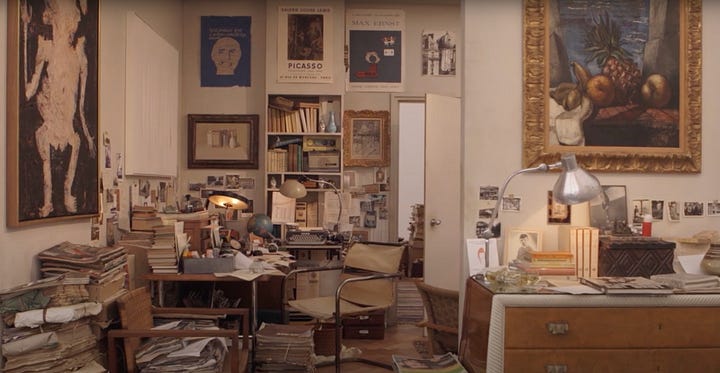

Let’s jump into the private worlds of some of art’s most influential collectors and historians!
Peggy Guggenheim
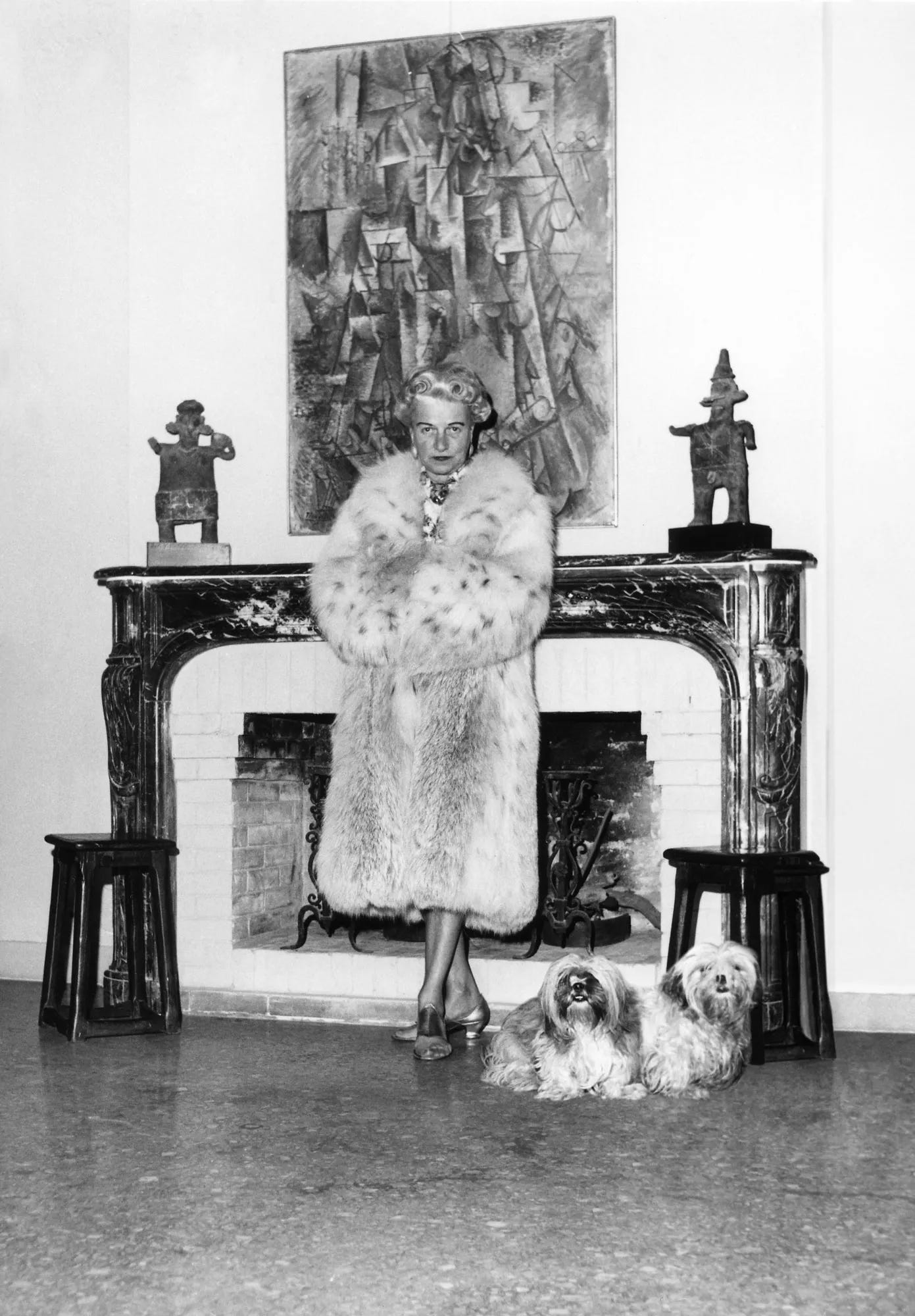
This Vogue article about Peggy paints a wild picture of her, but it’s one that is entirely based on truth.
“Over the course of Lisa Immordino Vreeland’s new documentary, Peggy Guggenheim: Art Addict, the famous collector is called, or calls herself, a narcissist; an enfant terrible; a nymphomaniac, an outsider; a disturbed, liberated woman; timid; charmingly naive; a little girl; and a lone wolf.
No matter how you think of her, Peggy Guggenheim was a character. Consider her life: The niece of Solomon R. Guggenheim, Peggy rejected her bourgeois German-Jewish New York family; shaved off her eyebrows to shock her high school classmates; fled to Europe; bought oodles of Surrealist, Cubist, and Abstract Expressionist art when nobody—as in the Louvre and the Guggenheim—thought it worth anything; supported Djuna Barnes and Jackson Pollock before they were famous; smuggled her art collection out of England during World War II; later bought a Venetian palazzo to display it; suffered a botched nose job that she never bothered to fix; surrounded herself with a fleet of Lhasa Apso; became known for a style of ornate, cat-eye-meets-carnival-mask glasses that are still sold in the gift shop of her museum; slept with anyone and everyone who was intriguing to her; and, to drive the point home, published, in 1946, a tell-all memoir about her sexual exploits.”
How can one not be interested in her? I’m headed to Venice soon (first time in Italy!!!!) and really, really, reeeeeeally need to find myself within her world as much as possible. Tickets to roam around her villa-turned-museum are officially booked! Speaking of booking, I also purchased a biography about her, which I hope to finish before the trip.
I loved reading about her advocacy for the public to see these artworks:
“In 1951, the storied heiress-turned-art-patron Peggy Guggenheim opened her palazzo on Venice’s Grand Canal to the public from Easter to early fall. For three days a week, strangers could stroll through rooms full of Pablo Picassos and Jackson Pollocks while she went about her daily business inside. By then, she had cemented her reputation as a fierce champion of CUBIST, SURREALIST, DADA and ABSTRACT ART, one with a voracious appetite for the vanguard.
The visitors who flooded Palazzo Venier dei Leoni encountered spectacular works by JEAN ARP, Constantin Brancusi, ALEXANDER CALDER, LEONORA CARRINGTON, GRACE HARTIGAN, KAZIMIR MALEVICH, HENRY MOORE and WASSILY KANDINSKY, to name just a few. But they also were lucky enough to see the less-celebrated treasures elegantly packed into her home, which included her collection of objects from Africa, Oceania and the indigenous Americas.”
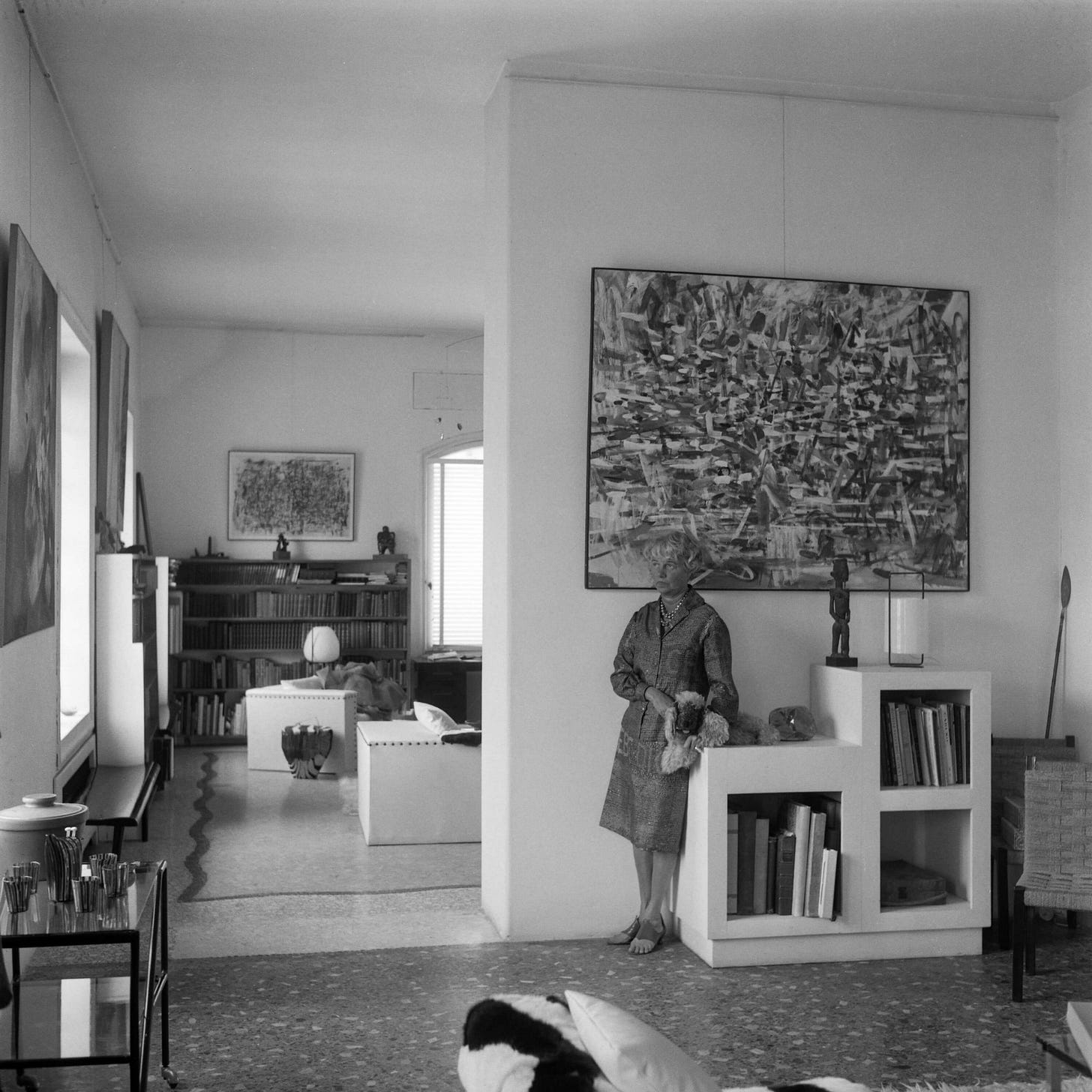
My always-favorite piece in her home (this might change after my visit, but likely NOT) is her Alexander Calder bed frame, as featured in an earlier writing of mine. Part of me hopes they have guide dogs throughout the museum—Lhasa Apso, of course. Will keep you posted!!!
Clement Greenberg
Mr. Clement Greenberg was at the forefront of my university studies in modern art history. It’s been almost 15 years since I sat in those classes and I still remember my professor raving about him consistently. Many of her words about his man lead me to heavily pursue interning at MoMA briefly after graduation. Vogue, in 1969, wrote about his high status, definitely mimicking the air of importance that my professor assigned to him. “Planted at the top, like a flag on the moon, Clement Greenberg is the American art critic known best around the world. . .Although he has been called the pop of art by those who like to think of him sitting on the throne of infallibility, there is nothing papal about him. Rather he is a definite, immaculate writer, never afraid to battle with crossed typewriters.”
In my eyes, I remember him for:
his influential romantic partnership for a period of time with Helen Frankenthaler
his enormous role in the promotion of Abstract Expressionism
speaking and writing about pictorial flatness, the avant-garde, and kitsch
His apartment in New York City was photographed for a 1964 issue of Vogue, and you’ll see that it’s packed full of large-scale abstract paintings. Motherwell, Nolan, Olitski, galore! There are a few smaller Abstract Expressionist works, and some unnamed sculptures from different cultures. I’m surprised how remarkably plain most of his decor is, but it weirdly balances itself out with the vibrant canvases.
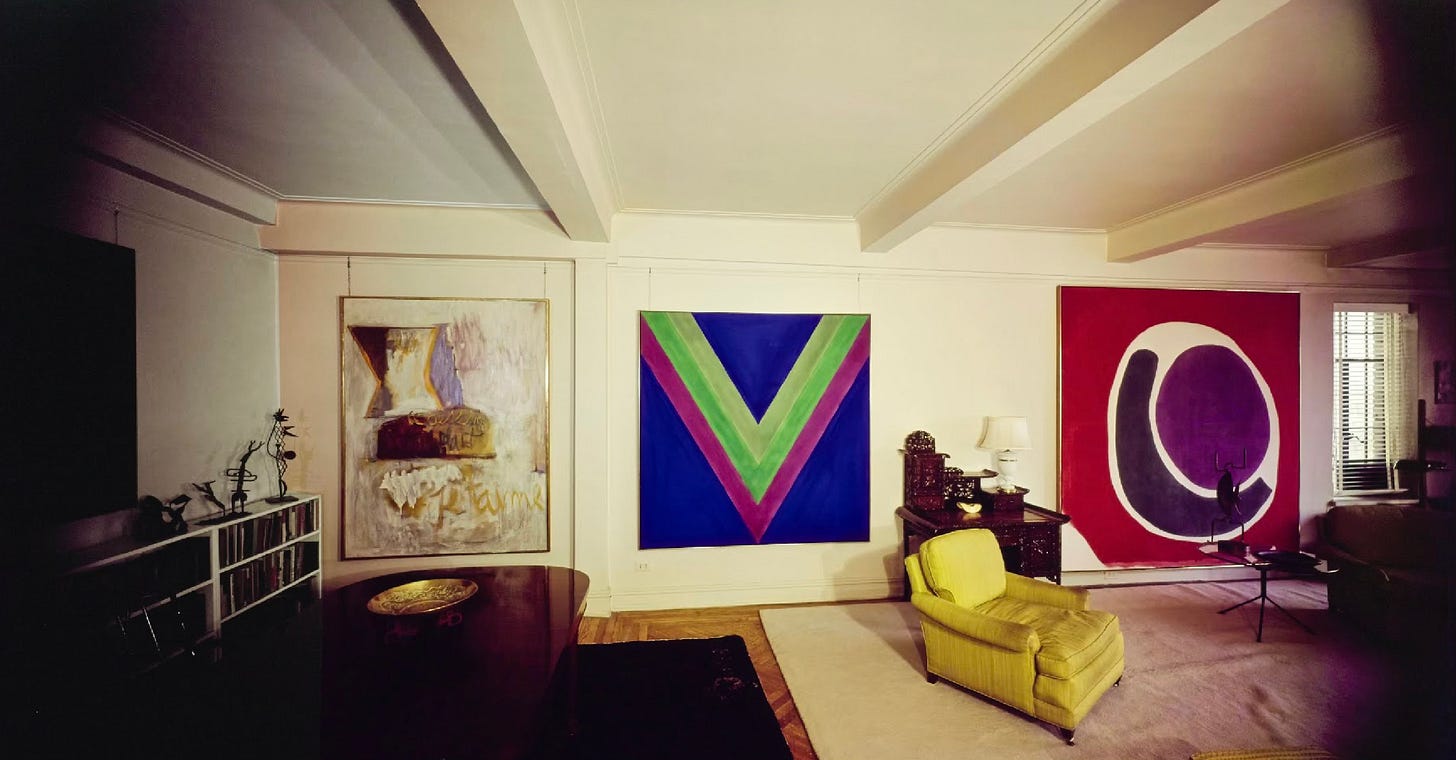


The Tate wrote about Greenberg’s study:
“Kenneth Noland’s Gift is seen hanging in the seventeenth floor New York apartment of the art critic Clement Greenberg. The giant canvas is positioned above the desk, the surface of which is covered with stacked paperwork, desk lamps and a world globe. The giant scale and mesmerising centralised design of the painting appears, in this context, disturbingly close to where Greenberg’s field of vision would have presumably rested when he sat down to write. Greenberg could have turned to his left and his view of Central Park for some optical relief, but otherwise Noland’s picture dominated the corner of his study, reinforcing the assertive power of the work’s design. In the photograph, Gift contrasts with the bookish clutter on the desk, hovering in front of the eternally absent body of the critic, the very vision of the bold color, open form and flat composition that Greenberg regarded as ‘the only way to high pictorial art in the near future’.”
Herb and Dorothy Vogel
I’ll never forget the octogenarian charm of the Vogels, a husband and wife (postal clerk and librarian, respectively) who bit by bit found themselves as owners of one of the world’s most robust contemporary art collections. Again: they weren’t rich! They weren’t famous (yet)! They passionately loved art and began investing small amounts of money in the 1960s to support relatively unknown, local artists. The artists just happened to be, you know, Andy Warhol, Christo and Jeanne-Claude, Sol LeWitt, and others. They lived in a modest one-bedroom NYC apartment and stuffed the place to the brim with these pieces. They even talked about taking care of Christo and Jeanne-Claude’s cat, Gladys, once while the artists were busy installing their Valley Curtain. They somehow remained totally humble and normal, while also being incredibly close to the world’s most famous abstract and contemporary artists. This scenario could never, ever happen today. Jeff Koons will never know the name of me, a normal person.

Invite your friends to read Absolument ! and receive a “paid” subscription for free.
When you use the referral link below, or the “Share” button on any of my posts, you'll get credit for any new subscribers. Simply send the link in a text, email, or share it on social media with friends.
3 friend referrals gets you 1 month free access to all posts
6 friend referrals gets you 3 months free access to all posts
25 friend referrals gets you half of a year free access to all posts
Gertrude Stein
If you’ve ever seen Midnight in Paris, you may remember the great portrayal of Gertrude and her home! I think they captured the spirit nicely— especially given the fact that she (and her apartment) seemed to have a complexity that would be impossible to recreate.
Who was Gertrude? The Poetry Foundation summed her up here:
“American writer Gertrude Stein was a central figure in the Parisian art world. An advocate of the avant garde, Stein helped shape an artistic movement that demanded a novel form of expression and a conscious break with the past. The Paris salon at 27 rue de Fleurus that she shared with Alice B. Toklas, her lifelong companion and secretary, became a gathering place for the “new moderns,” as the talented young artists supporting this movement came to be called. Among those whose careers she helped launch were painters Henri Matisse, Juan Gris, and Pablo Picasso. What these creators achieved in the visual arts, Stein attempted in her writing. A bold experimenter and self-proclaimed genius, she rejected the linear, time-oriented writing characteristic of the 19th century for a spatial, process-oriented, specifically 20th-century literature. The results were dense poems and fictions, often devoid of plot or dialogue, which yielded memorable phrases (“Rose is a rose is a rose”) but were not commercially successful books.
With guidance from her eldest brother Michael—an art collector who lived just a few blocks away—Stein began to amass a modern art collection of her own.”
The Met held a massive exhibition about her collection a little over a decade ago. I’d love to see it hosted there again. It covered Gertrude and her siblings’ love for collecting, and her Saturday salons in which she weekly opened up her apartment in Paris to artists, collectors, and anyone interested in avant-garde art. Similar to Peggy Guggenheim, it is nice to read that she also wanted the public to have (controlled) access to her home in order to share the art marvels with as many people as she could.
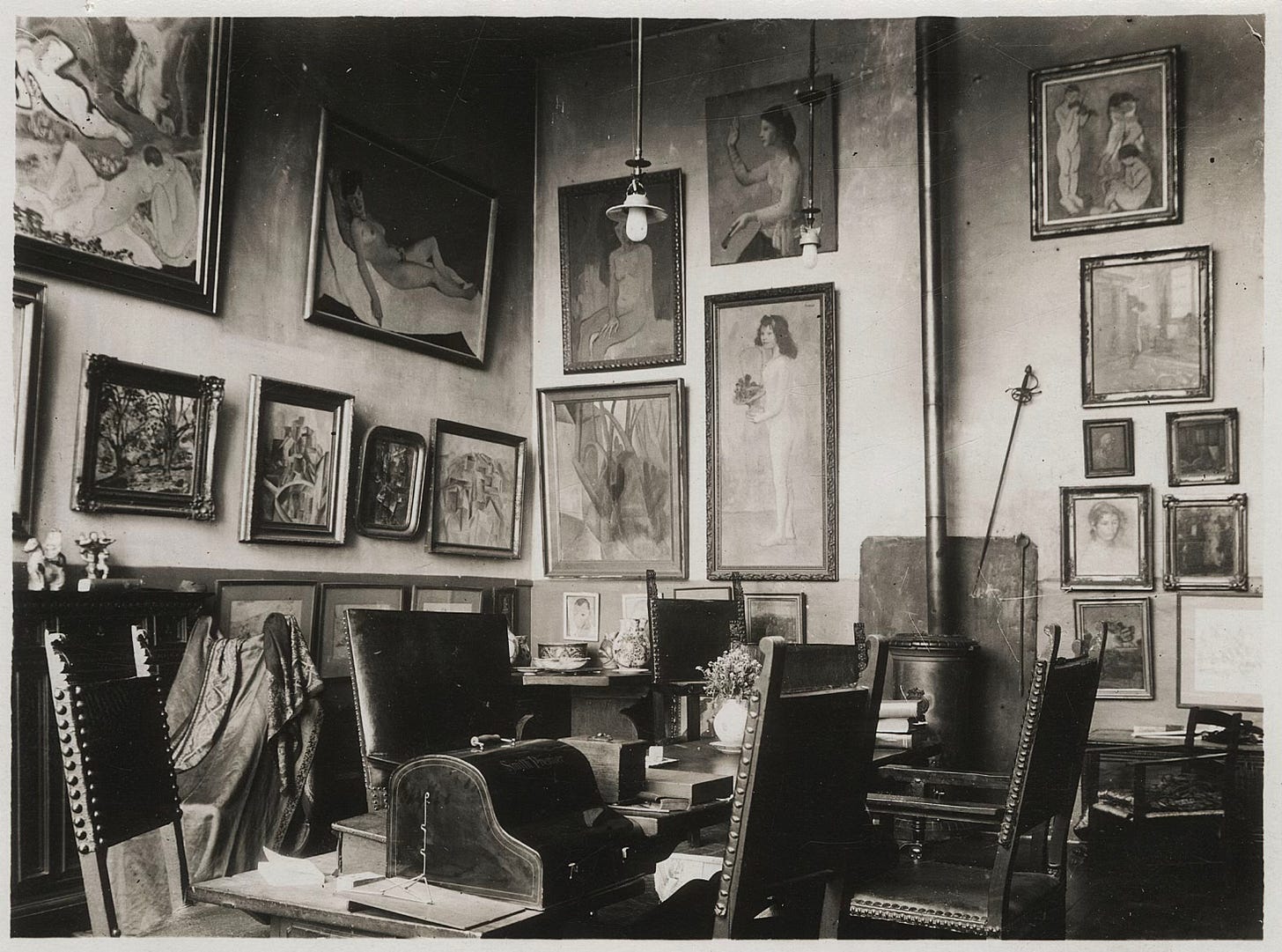
Related Notes:
I was intending to add more people to this post, but per usual, it became very long very quickly. So! More installments will arrive in the future, featuring Ada Louise Huxtable, Giorgio Vasari, and others.
This post originally started off with me writing a BOOK CLUB entry with the tentative title: “When a Parisian clothing/cosmetics designer loves/lives with an art dealer.” It was completely centered around Jeanne Damas and her partner, Edouard de Moussac’s Architectural Digest home tour article published recently.
Reading it instantly had me looking for close-ups of book spines. They were mostly illegible French pocket classics, as someone had confirmed in the Instagram comments.
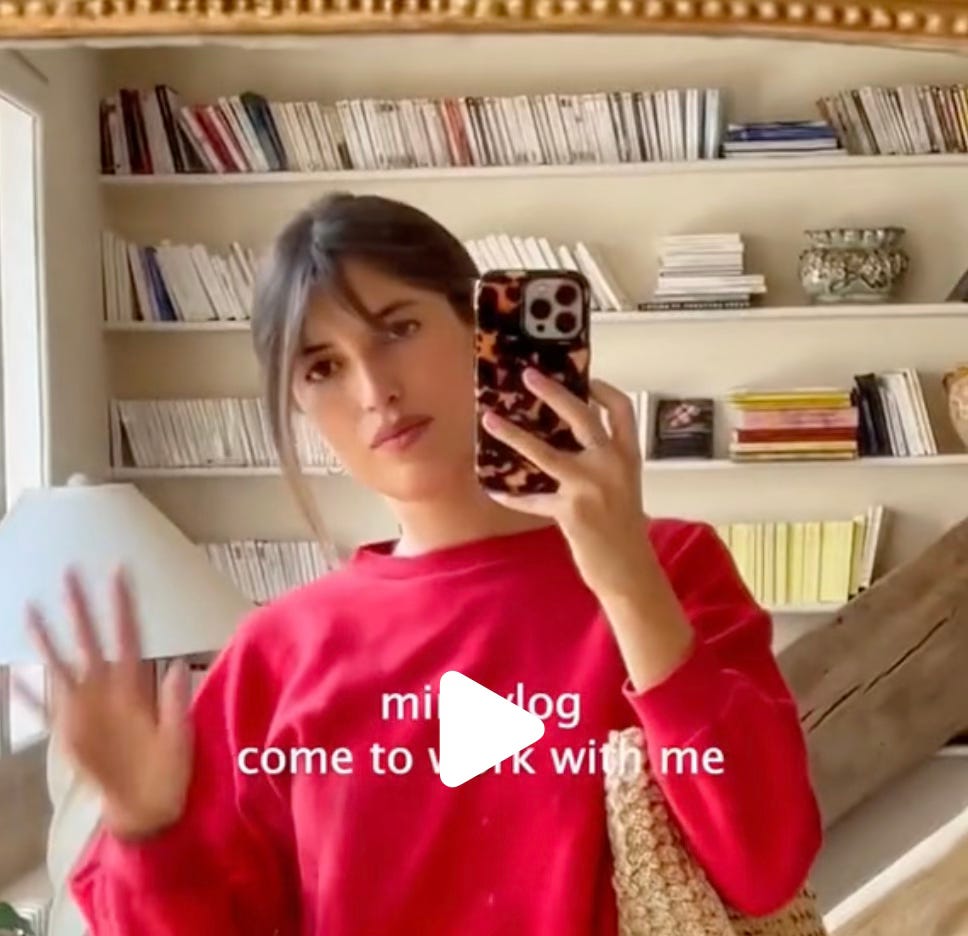
Then my curiosity transformed into: “Actually wait! The art is fascinating in this apartment, and it’s his actual livelihood!” I didn’t know if I was feeling inspired enough by it to run with the idea as a full BOOK CLUB writing, so here’s a teeny snippet of the book titles and some pieces of art that I liked:
Les Poets de Sept Ans: Sept Illustrations par Valentine Hugo (The Poets of Seven Years: Seven Illustrations by Valentine Hugo)
Paulina Peavy Etherian Channeler by Laura Whitcomb
Mark Rothko by the Fondation Louis Vuitton

I find myself wanting to play little research games (yeah that’s nerdy, I know). I want to connect the dots from art collector to an artist in their home, then take a look at that artist’s home to find another artist, and continue the chain to see where it takes me. Sort of like the Five Clicks to Jesus challenge, but with no *holy* end goal in mind.
A super charged question: if you could own one piece of famous art for your home, what would it be?
**
Happy art-ing!
Kelsey Rose






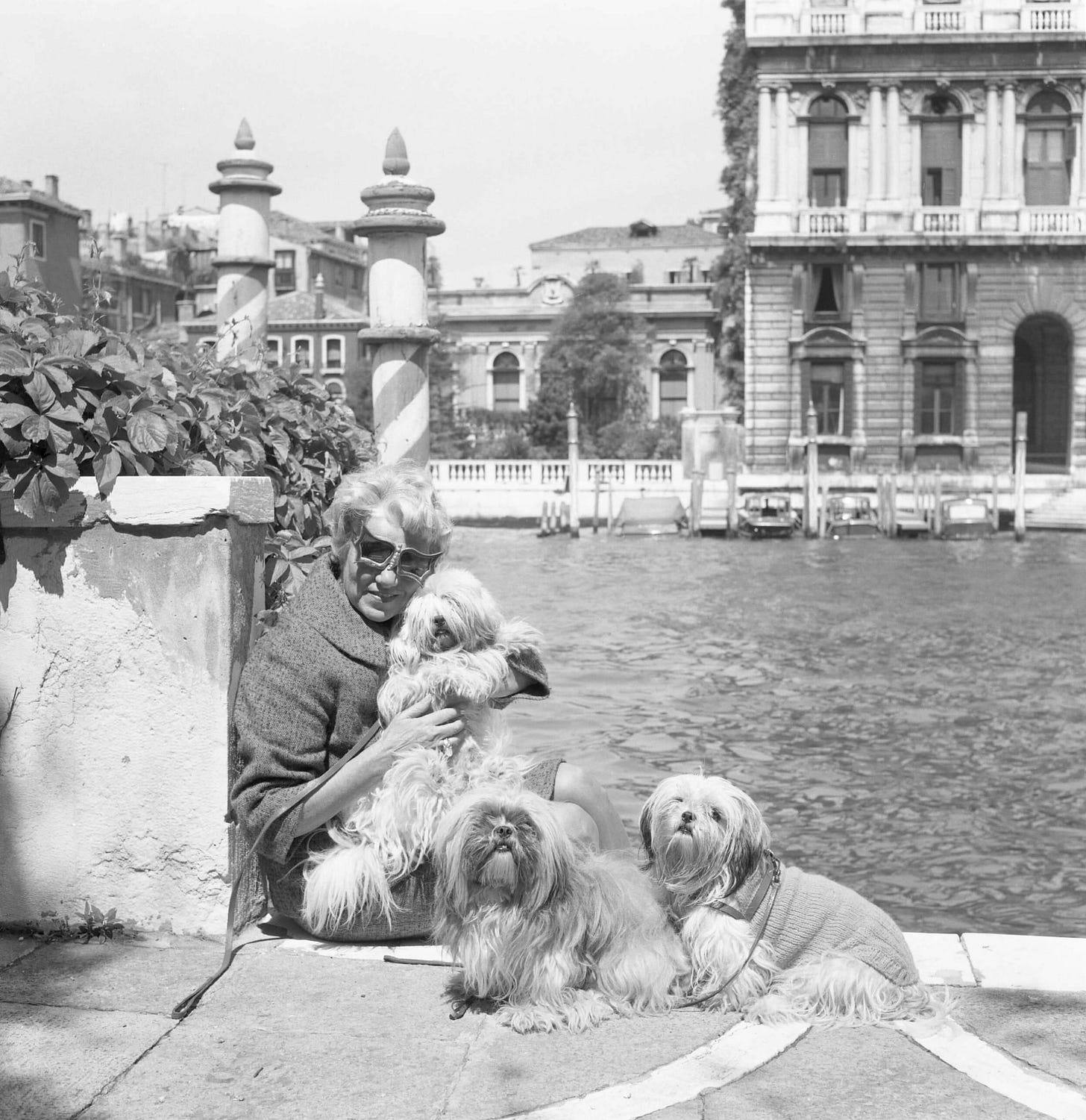

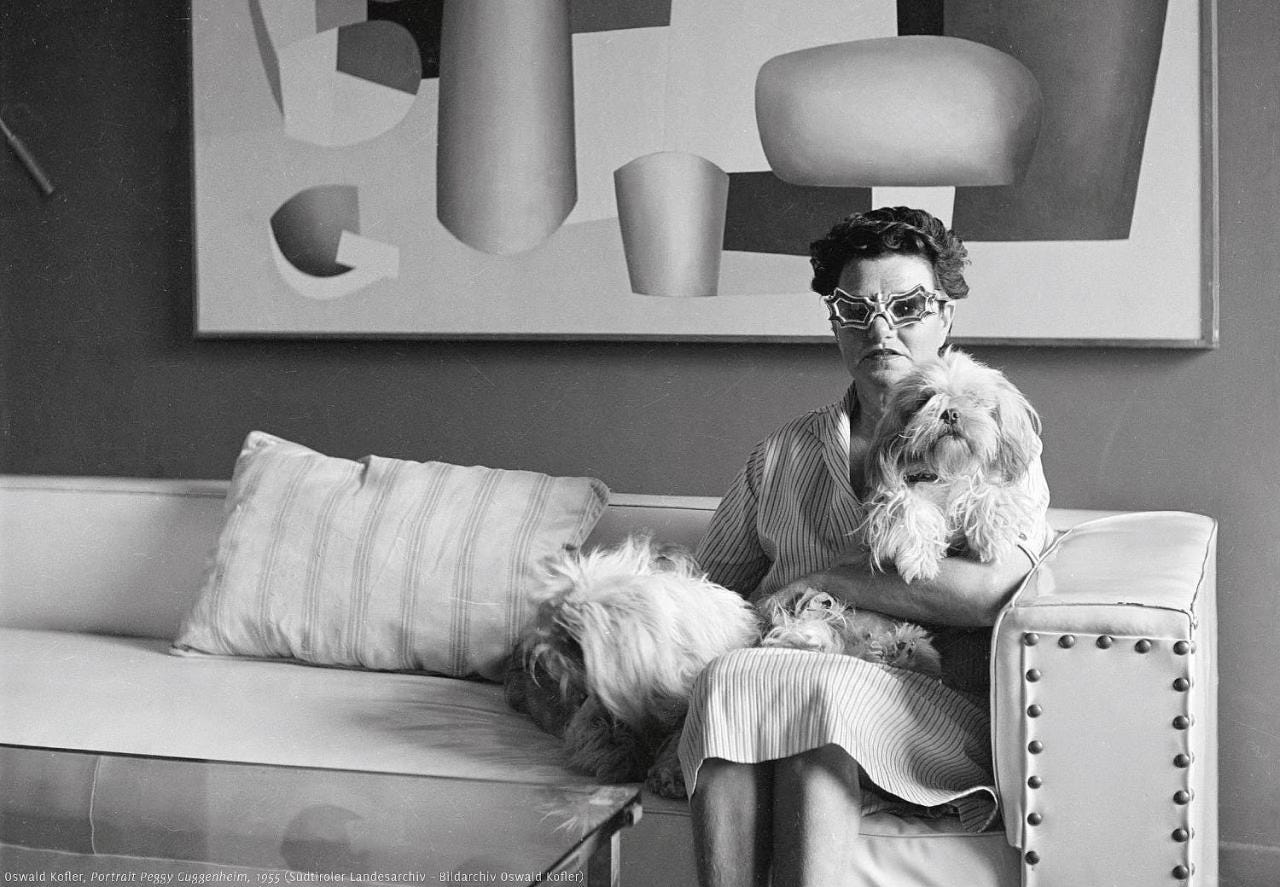
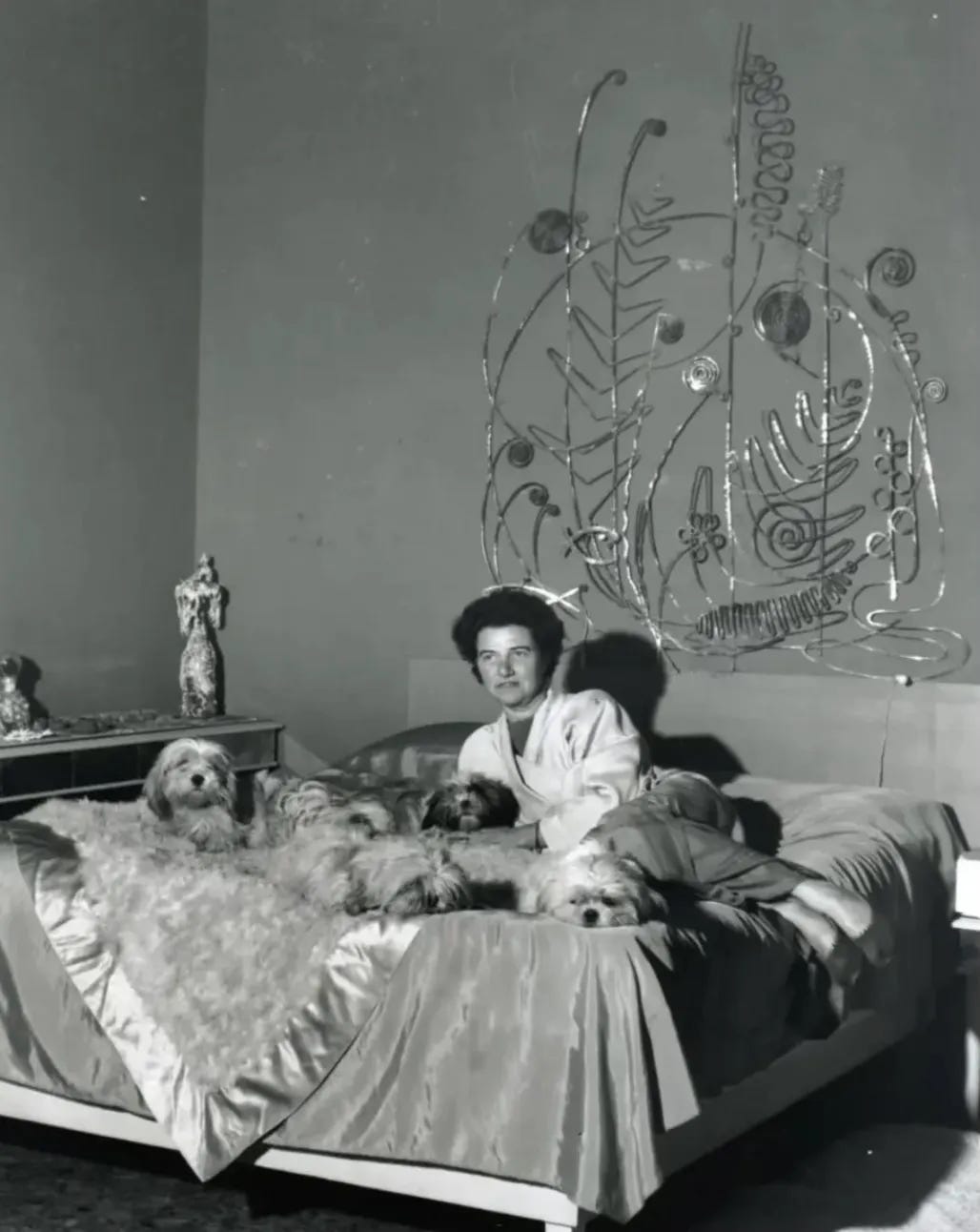
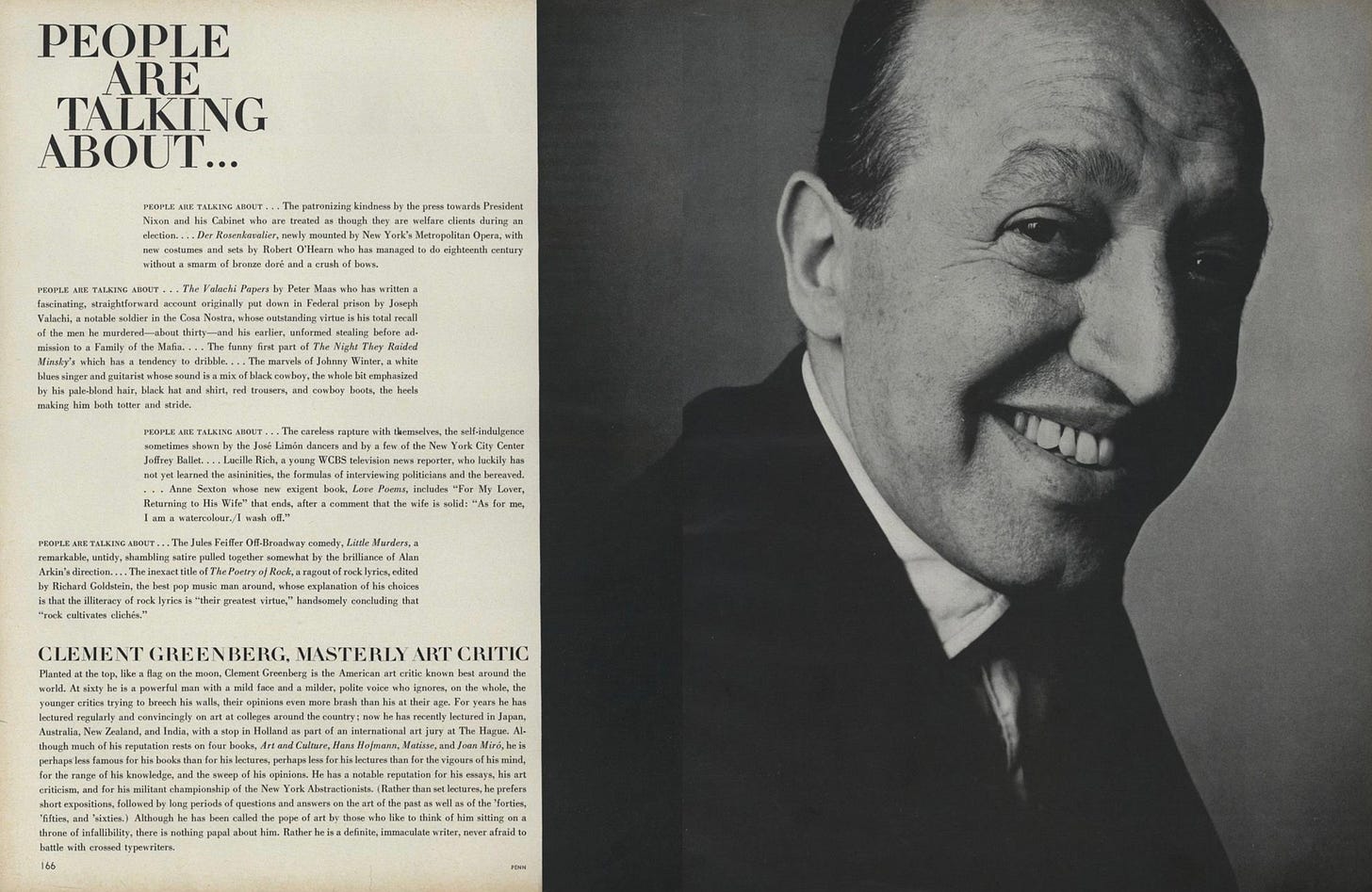
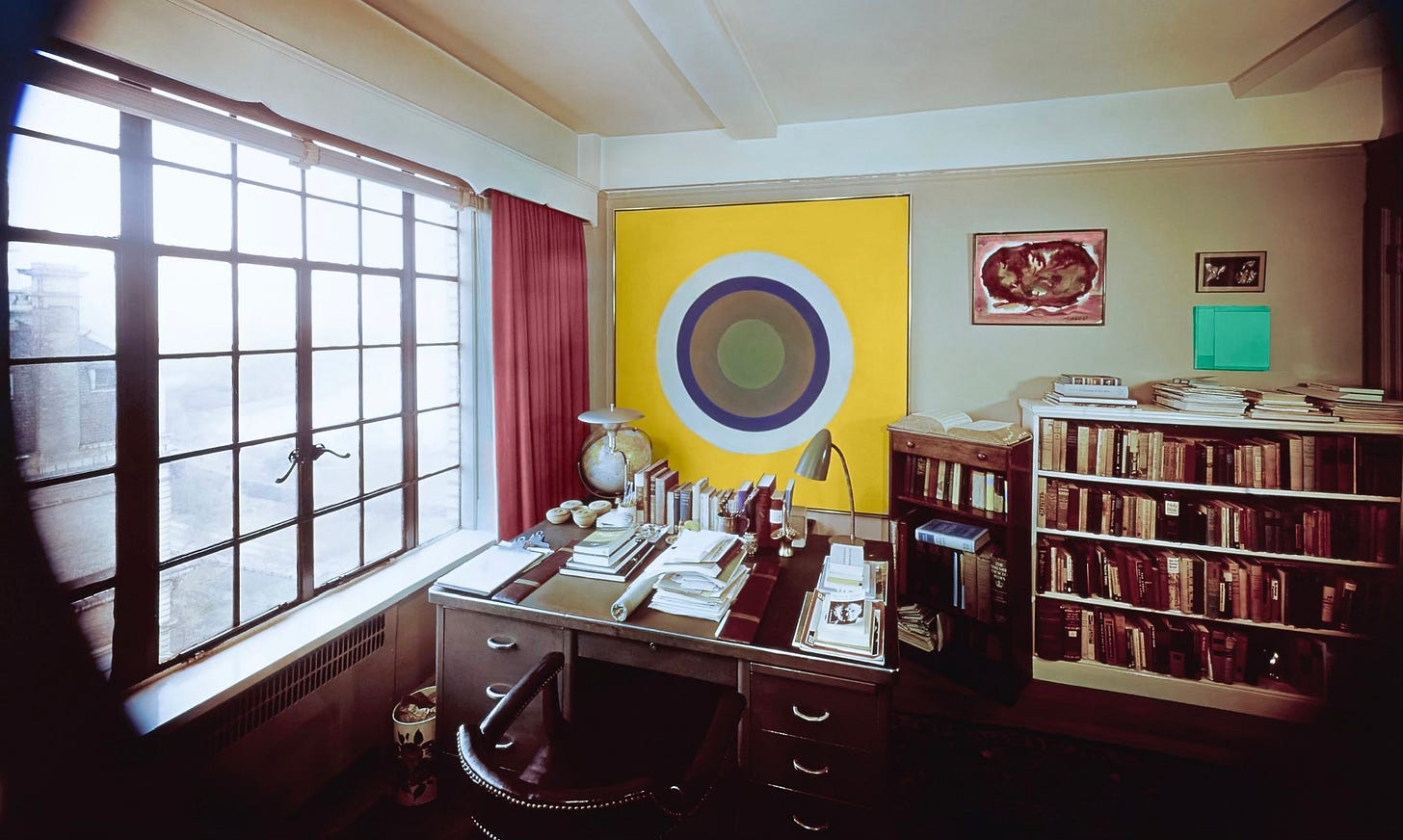
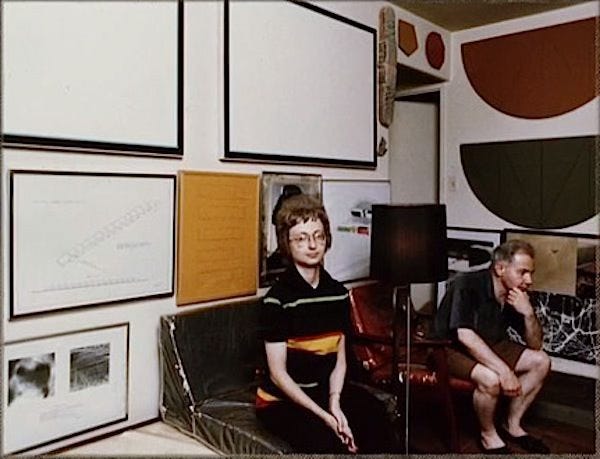
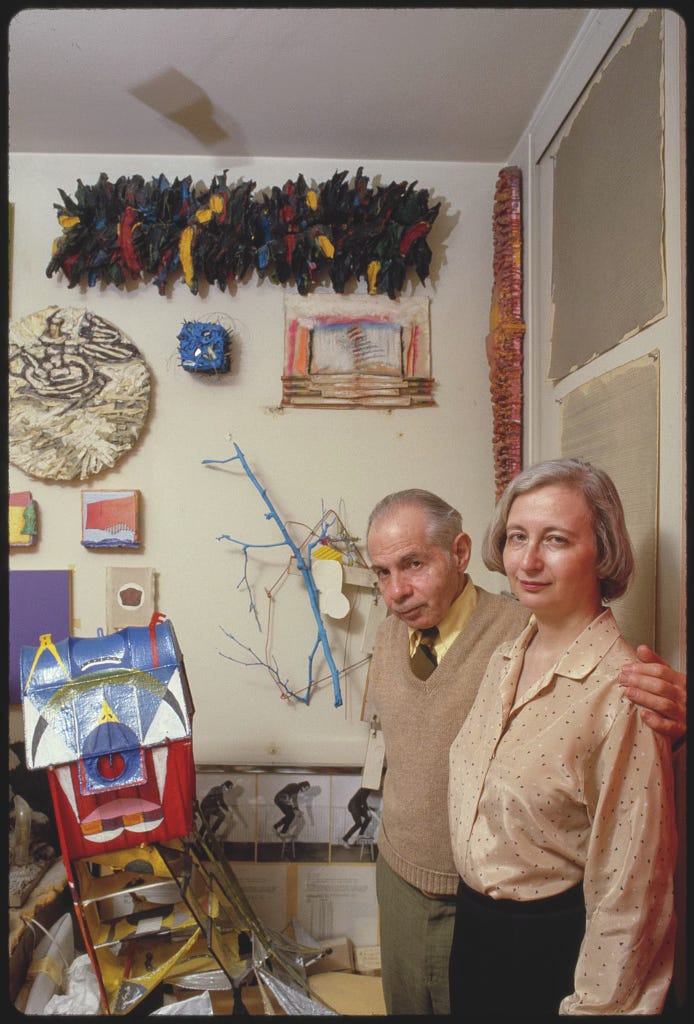




I loved this! I would love to wake up to a Rothko every morning.
I have loads of Venice information in my newsletter. Have a wonderful trip!
The Peggy Guggenheim museum in Venice is one of my favourites 🥰